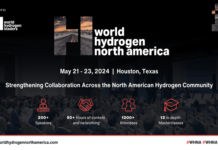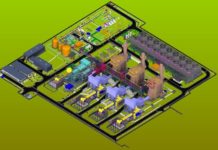The project was undertaken to boost the development of offshore wind energy in Germany. It is composed of 12 turbines that will together generate 60MW. The farm is capable of powering 50,000 households.
The project was developed by the consortium Deutsche Offshore-Testfeld und Infrastruktur (DOTI). The consortium was formed in June 2006 by three companies: EWE (47.5%), E.ON Climate and Renewables Central Europe (26.25%) and Vattenfall Europe Windkraft (26.25%).
Developers have invested โฌ250m in the project. The installation of the first turbine was completed in July 2009 while the last turbine (12th) was installed in November 2009. All the 12 turbines were installed within a period of seven months. The wind farm is now being supervised and managed by EWE.
History
“The project was undertaken to boost the development of offshore wind energy in Germany.”
PROKON Nord Energiesysteme (PROKON Nord) first undertook the project. The company submitted an application to build the wind farm to the Federal Maritime and Hydrographic Agency on 16 May 2000. An application for the cable route was submitted to the Government of Weser Ems in February 2001.
The proposal, under the name of Testfield Windpark Borkum, was approved in November 2001 as it was intended as a research project. Permission for the cable route was obtained in April 2002. Environmental and ecological studies were completed in May 2003.
The Offshore-Stiftung Foundation, which was established by the Federal Ministry for the Environment, Nature Conservation and Nuclear Safety, bought the rights of use for Windpark Borkum from PROKON in September 2005. DOTI signed a lease agreement with the foundation in December 2006.
Development
Project work began in August 2007. About 20 European companies were involved in the planning and production of the components required. The first phase, which involved work related to cables and routes, started in August 2007. In summer 2008 the laying of submarine cables and the preparation of grid connections was carried out. In September 2008 the offshore transformer station was installed.
The project incorporated an adjustment phase, which involved a technical inspection of the turbines. The next phase involved trial operations, in which the turbines were tested under full load at various wind speeds.
Details
The wind farm includes an offshore transformer station. It also has a control room for supervising and operating the turbines.
“An attempt to install the turbines in August 2008 was called off due to poor weather.”
The turbines are installed at 30m water depth. Separated by about 800m, they occupy 4kmยฒ in total. The turbines form a grid-like structure with four rows and three columns along the east-west axis.
Six turbines are M5000 models from Areva Multibrid and the others are REpower 5M models.
The Multibrid turbines were erected in the southern part of the wind farm and the REpower turbines were installed in the northern part.
The offshore transformer station is located in the south-east corner of the farm. It connects the farm to the national grid and supplies turbines with operating power. It also serves as a logistical support centre.
Construction
DOTI carried out the construction, which was officially launched in 2007. An attempt to install the turbines in August 2008 was called off due to poor weather. The turbine installation was resumed in April 2009.
Thialf, a jack-up barge, was brought to the site. It is a deep-water construction vessel and acted as a work platform. The semi-submersible barge has two floating cranes that can lift up to 14,200t. It was sourced from the Dutch shipyard of Heerema Marine Contractors.
The piles were driven to a depth of 42m. The cylindrical piles were of 1.8m diameter and 31m to 44m long. The foundation structures were laid using pile drivers.
The farm used prefabricated components for the turbines. The setting up of the rotor blades, tower segments, nacelles and foundations was carried out offshore. Six tripods were used as foundations for the M5000 turbines. Alpha Ventus is the first offshore wind farm to use six tripods. The foundations of the last Multibrid turbine were laid on 1 June 2009. Aker Solutions manufactured the tripods.
Square jackets were used when laying the jacket foundations. Norwind acted as the general contractor for the jacket foundations.
The individual sections of the towers were built during the next phase. The structures were fixed in their final position using concrete. Steel flanges were used to connect the bottom structures to their substructures.
“The power generated by Alpha Ventus is transmitted to Germany’s national grid.”
The offshore transformer station was constructed by a consortium composed of Bilfinger Berger, Hochtief Construction and WeserWind. The transformer platform was laid over a jacket foundation. The main and cable deck were constructed at a height of 25m and 21m respectively above the sea surface. AREVA supplied the transformers fixed in the transformer station under a supply contract awarded in 2007. The cables connecting the tripods to the offshore transformer station were laid by the pontoon vessel Stemat 82.
The cables were connected to the turbines using divers or remotely operated vehicles (ROV). They established a connection between the turbines and the transformer station to allow the transmission of power. An underwater cable that transmits power from the transformer station to the power grid was laid in 2008. NSW Norddeutsche Seekabelwerke supplied and laid the sea cables.
In October 2010, nacelles of the six AREVA M5000 turbines were replaced after discovering a fault. In spring 2010, a temperature rise was observed in the sliding bearings of the M5000 turbines. The nacelles were needed to be replaced to address this problem.
Transmission
The power generated by Alpha Ventus is transmitted to Germany’s national grid. Transmission system operator Transpower (formerly E.ON Netz) is engaged in transmitting the power to the grid.
In the first year of its operation, the park has supplied about 170GW of power to the national grid. A 30kV submarine cable is being used to transmit power to the transformer platform. At the platform, transformers increase the voltage to 110kV and convert the power into three-phase. The converted power is transmitted to transformer station at Hagermarsch and then to the German grid. A 110kV submarine cable of 18cm thickness is used for transmission.













































